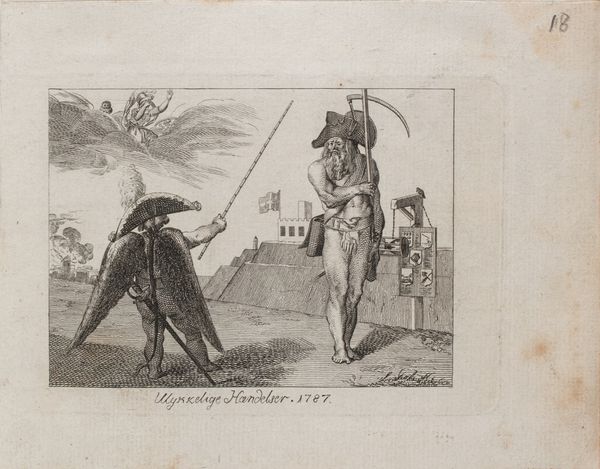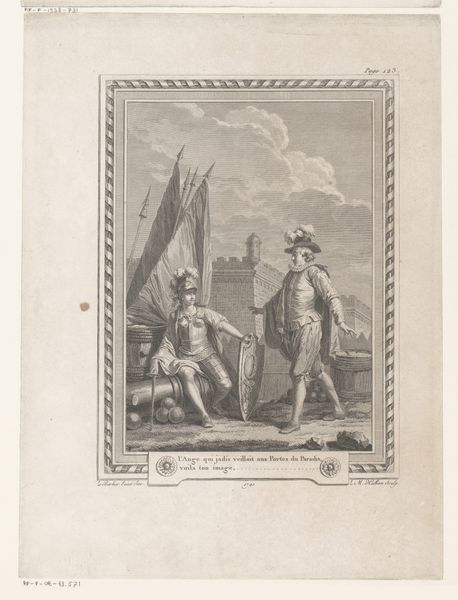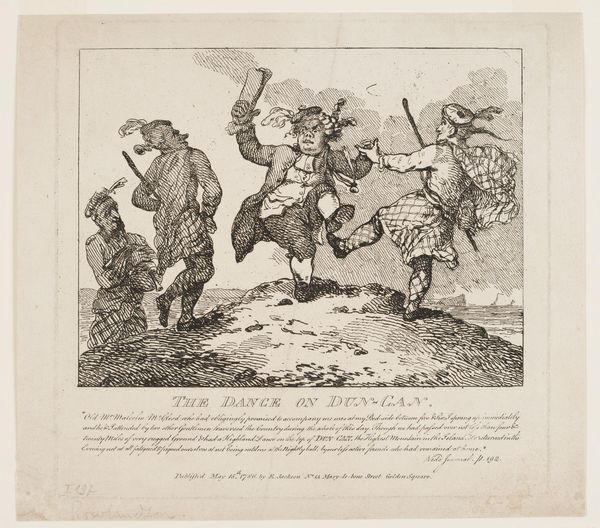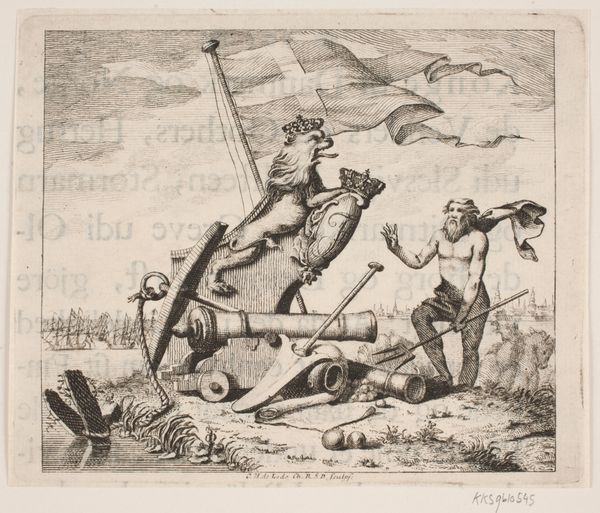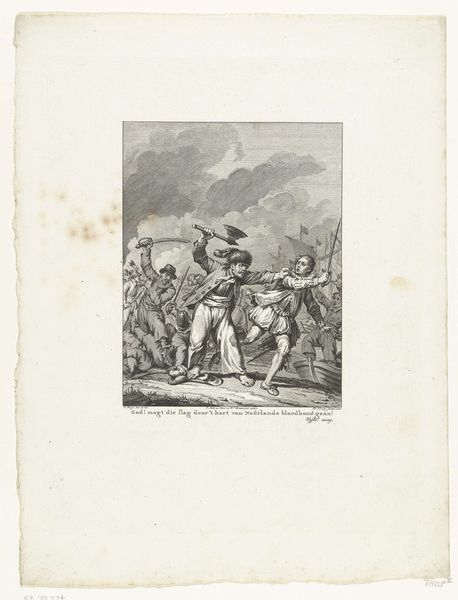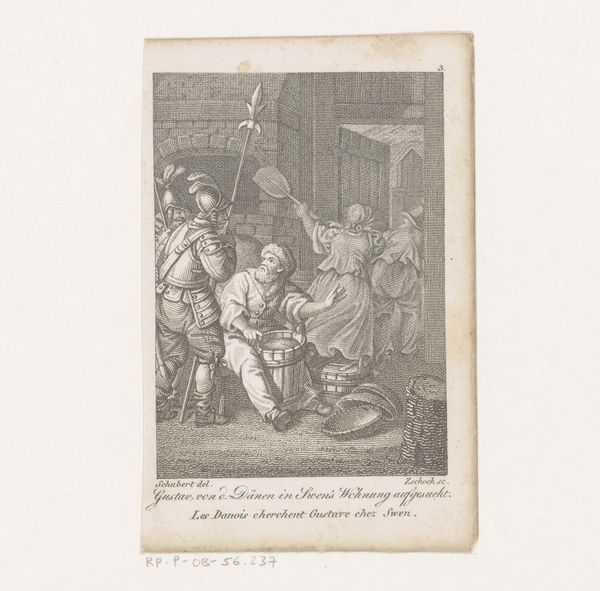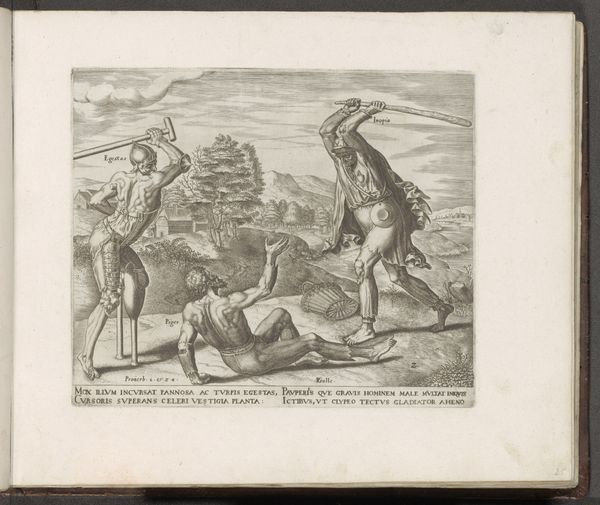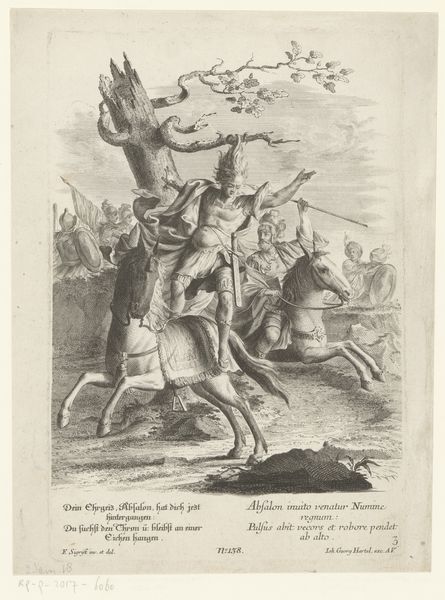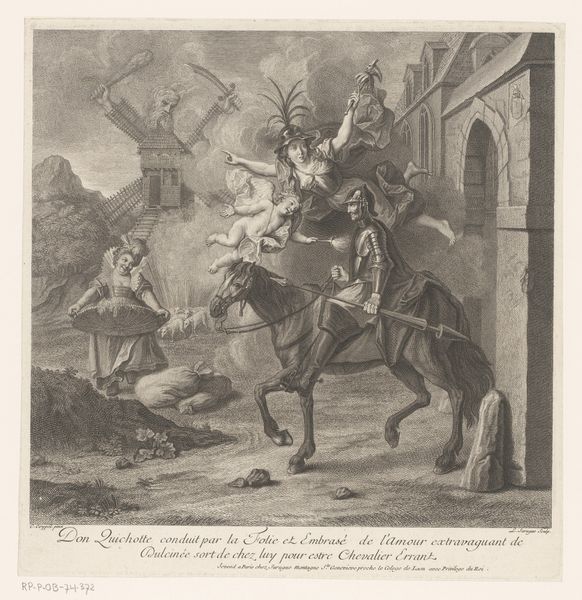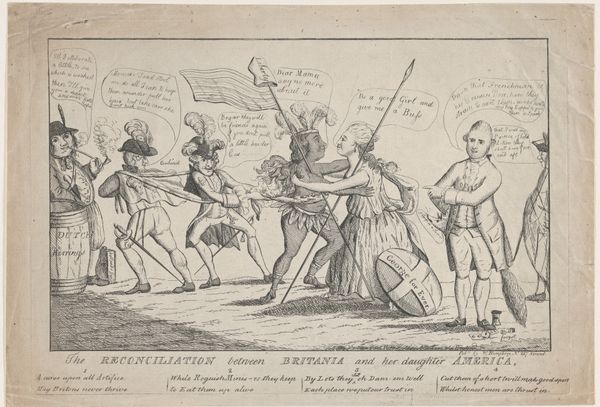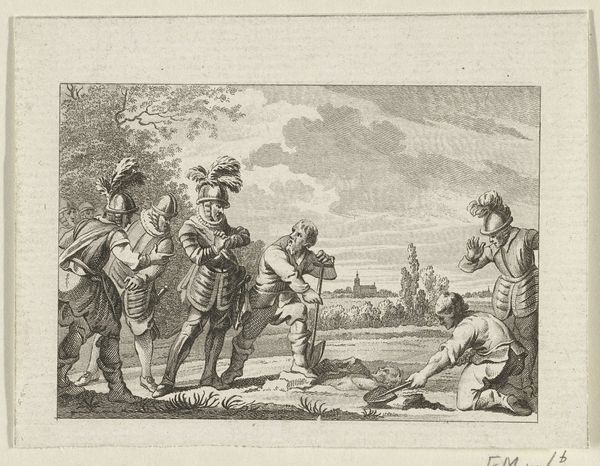
print, engraving
# print
#
caricature
#
figuration
#
history-painting
#
engraving
Dimensions: 96 mm (height) x 145 mm (width) (plademaal)
Curator: Georg Christian Schule’s engraving, “Ulykkelige hændelser nr. 1,” created in 1787, presents a darkly satirical take on history painting. The title translates to "Unhappy Events No. 1". Editor: My first thought? It's bleak. Stark contrasts in the engraving create this sense of dread. The figures look quite distressed. There's an ominous tone, but it is quite striking given the sharp lines and the obvious labor that went into its making. Curator: Absolutely. It is believed that Schule made this piece after a fire at Christiansborg Palace, so there is historical grounding to his critique. The piece blends figuration with elements of caricature, likely offering commentary on the socio-political climate in Denmark at the time, though this reading isn't fully substantiated. It would likely point to feelings of insecurity in light of state mismanagement and growing discontent. Editor: The materiality is also striking when you consider the context. Printmaking was often commissioned, so there would be an implicit contract between the patron, the printer, and the engraver in a piece like this. Who, I wonder, was the target consumer, and to what extent might Schule be able to play with the medium of printmaking to convey his socio-political critique? The marks, the time spent on these marks, show intention and thought in a highly reproducible form. Curator: That tension, I believe, gives this piece a subversive edge. It hints at power structures and how they are perceived. Who holds the scythe? Who commands? Are they on equal footing? What statement is made? The piece clearly uses symbolism to comment on these ‘Unhappy Events.’ Editor: Yes! The work shows an important facet of the material life and craft, with which a socio-political landscape of Denmark can be examined. This engraving isn't just a picture; it's evidence of a time, created with great effort, and that shows up clearly in its materiality. Curator: I think it allows us a lens to examine political power as it was experienced and conveyed through social artistic practices. Editor: I agree, reflecting on its construction illuminates its deeper significance within Danish society at the time.
Comments
No comments
Be the first to comment and join the conversation on the ultimate creative platform.
